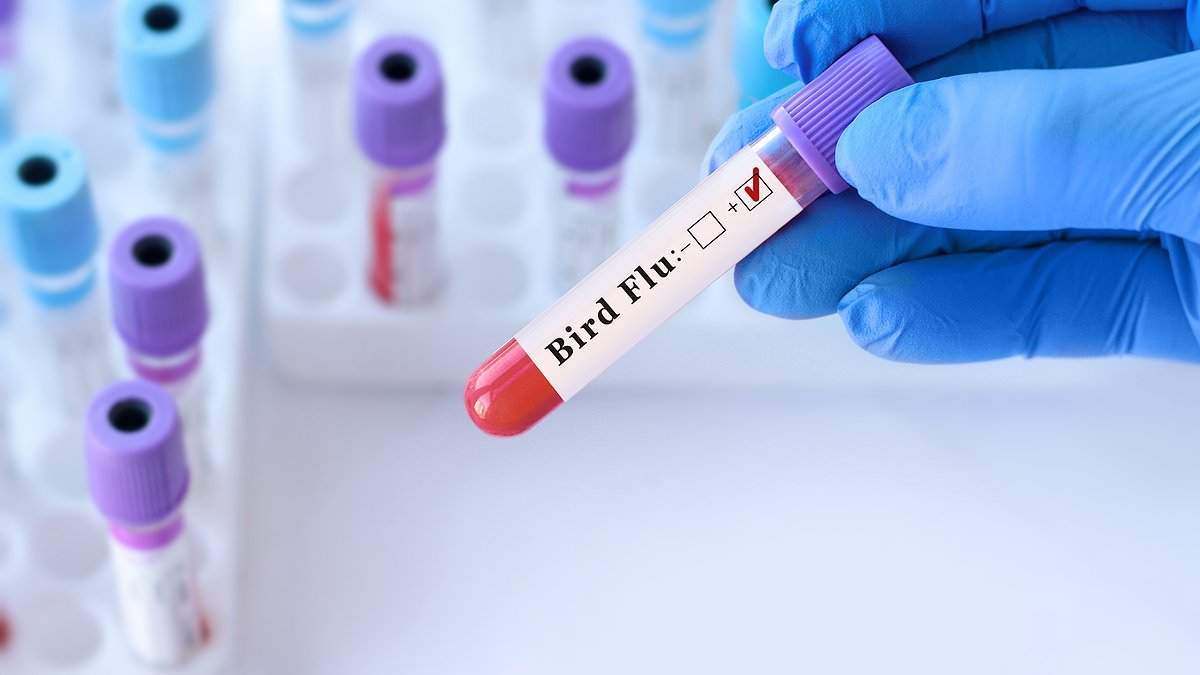A dairy farm worker in Colorado has been infected with H5N1 bird flu, becoming the fourth human case in the outbreak so far.
The man, who was not named, suffered a mild illness and conjunctivitis — also known as pink-eye — and has since recovered from the infection.
He was treated with oseltamivir, or Tamiflu, an anti-viral used to treat flu infections that was also used to treat the previous patients.
Revealing the infection in a release today, the CDC said that the risk to the public from bird flu remains low.
It is the fourth human case of human bird flu to be diagnosed in the US this year amid an outbreak of the virus in dairy cows, following a case detected in Texas in March, and two cases in Michigan in May.

The US government looking to fund a late-stage trial of Moderna’s mRNA pandemic bird flu vaccine

The above map shows the locations of the 139 dairy cattle herds where H5N1 infections have been confirmed. They are in 12 states
The new farmer is thought to have contracted the infection from dairy cattle he worked with in the northeast of Colorado that are confirmed to be infected with the bird flu strain H5N1.
There are no known links between this case and the others previously reported — with each suspected to be a separate instance of the virus jumping from cows to humans.
The CDC said in a release: ‘Based on the information available at this time, this infection does not change CDC’s current H5N1 bird flu human health risk assessment for the US general public, which the agency considers to be low.
‘However, this development underscores the importancee of recommended precautions in people with exposure to infected animals.’
Recommended precautions include the use of gloves, goggles or face masks while working with herds known to be infected with the virus.

Pictured is the Texas farm worker who was infected with H5N1 in March. The infection began in the right eye, before spreading to the left

Public health officials and epidemiologists were taken by surprise when bird flu infections started cropping up among dairy cows in late March this year.
Now, a total of 139 herds across 12 states have had infections confirmed, raising concerns that the virus could mutate, making it better able to spread to humans.
Colorado reported the most bird flu infected dairy herds over the last month, with 23 confirmed to have the infection.
The latest human case only had symptoms in the eye, like the first two cases reported this year, suggesting the virus had not spread to other areas of the body.
In late May, the second case in Michigan sparked alarm after the patient was reported to have respiratory symptoms.
Doctors were concerned that the virus may have spread to the lungs, where it could gain mutations and then jump between people. The patient recovered, however, and there were no signs that they had spread the disease.
In the latest case, CDC scientists confirmed the diagnosis after testing samples sent by Colorado’s state laboratories, where tests for influenza were ‘inconclusive’.
They have already confirmed the patient is infected with an H5 virus, with confirmation that the case is H5N1 — or bird flu — expected in the coming days.
Further tests have also been ordered on the samples to check for any worrying genetic changes.
CDC officials say that they have held numerous calls with state and local health officials and farm workers since the case was identified.
They have also supplied more PPE for farmers to the state and paid for local targeted advertising to warn of the risks of bird flu.
It comes after the FDA revealed it was expanding testing for bird flu in dairy products, including ice cream, butter and cheese.
The agency said last week it would swab 155 products bought from grocery stores nationwide for the virus.
If any are positive, further tests will be carried out to determine whether the virus inside them is ‘alive’ — or able to cause an infection in humans.
Previous tests have shown bird flu virus fragments found in products do not multiply in lab experiments, revealing they are ‘dead’ — or unable to make copies of themselves and infect humans.
Officials say this is because of the pasteurization process, with heats milk and then quickly cools it in order to kill off any microbes.
The expanded testing builds on previous, which found the virus in grocery store milks, cottage cheeses and sour creams, but in every case, the virus was ‘dead’ and unable to cause an infection in humans.
Ground beef, infant formula and powdered milk were also all swabbed for the virus and all tested negative.










